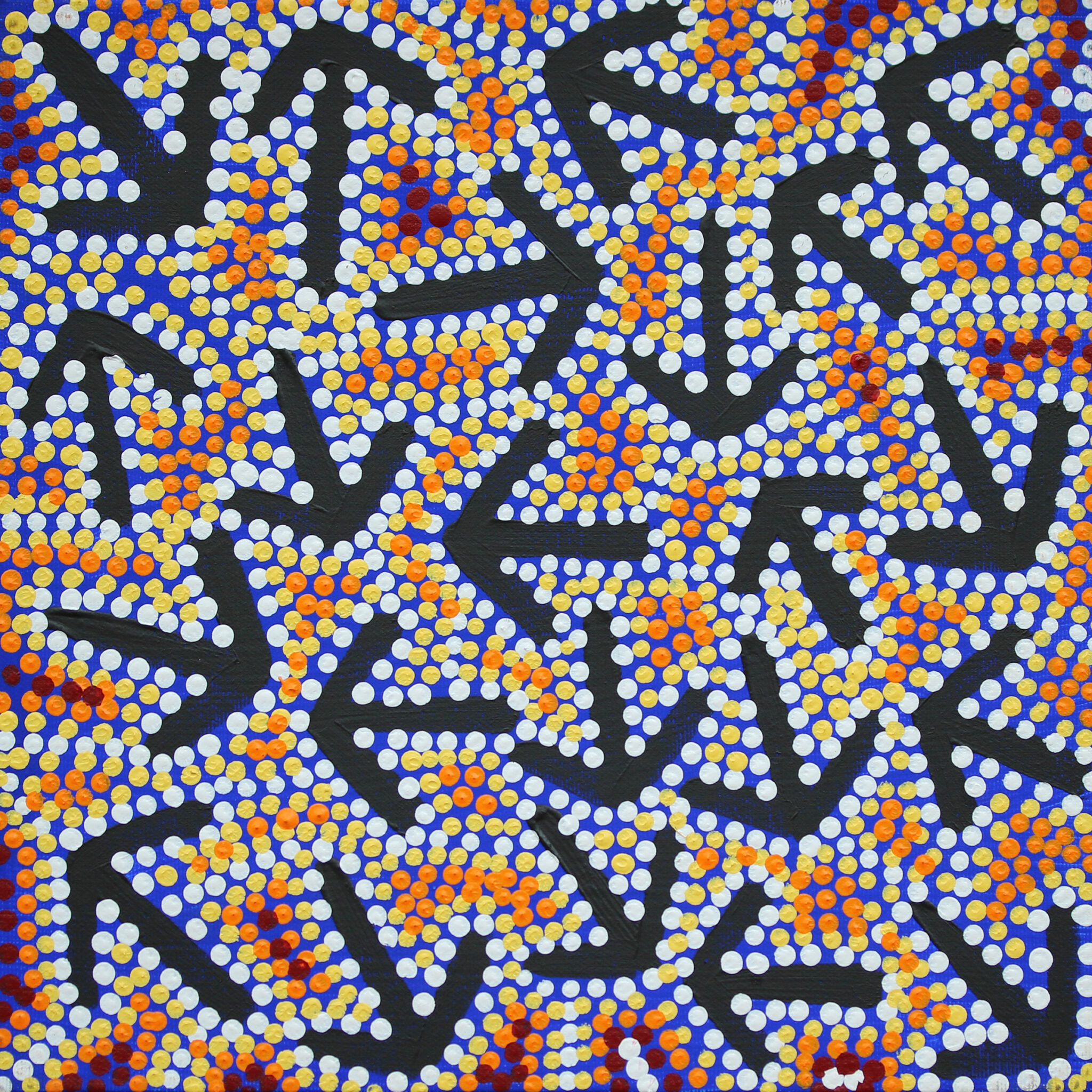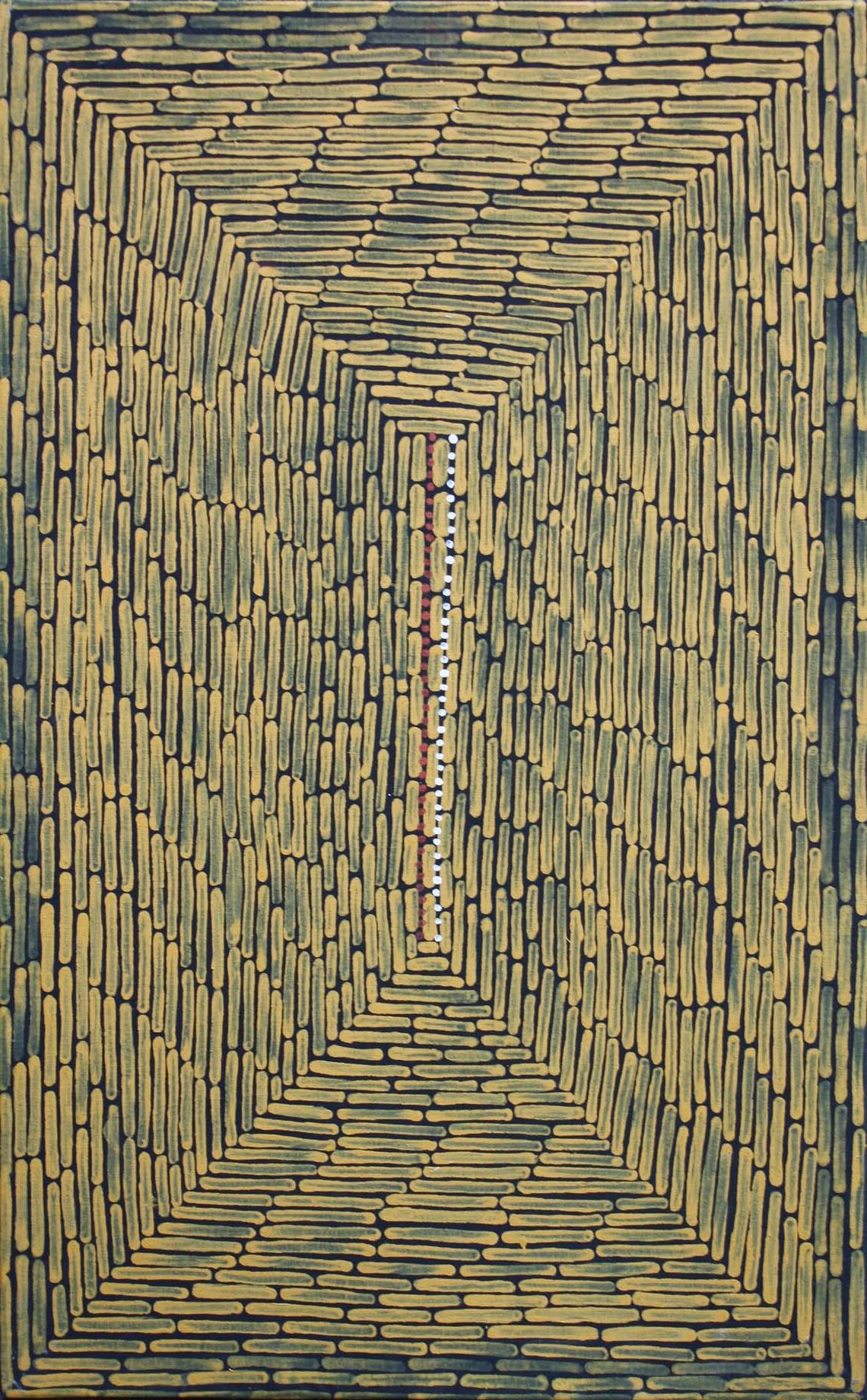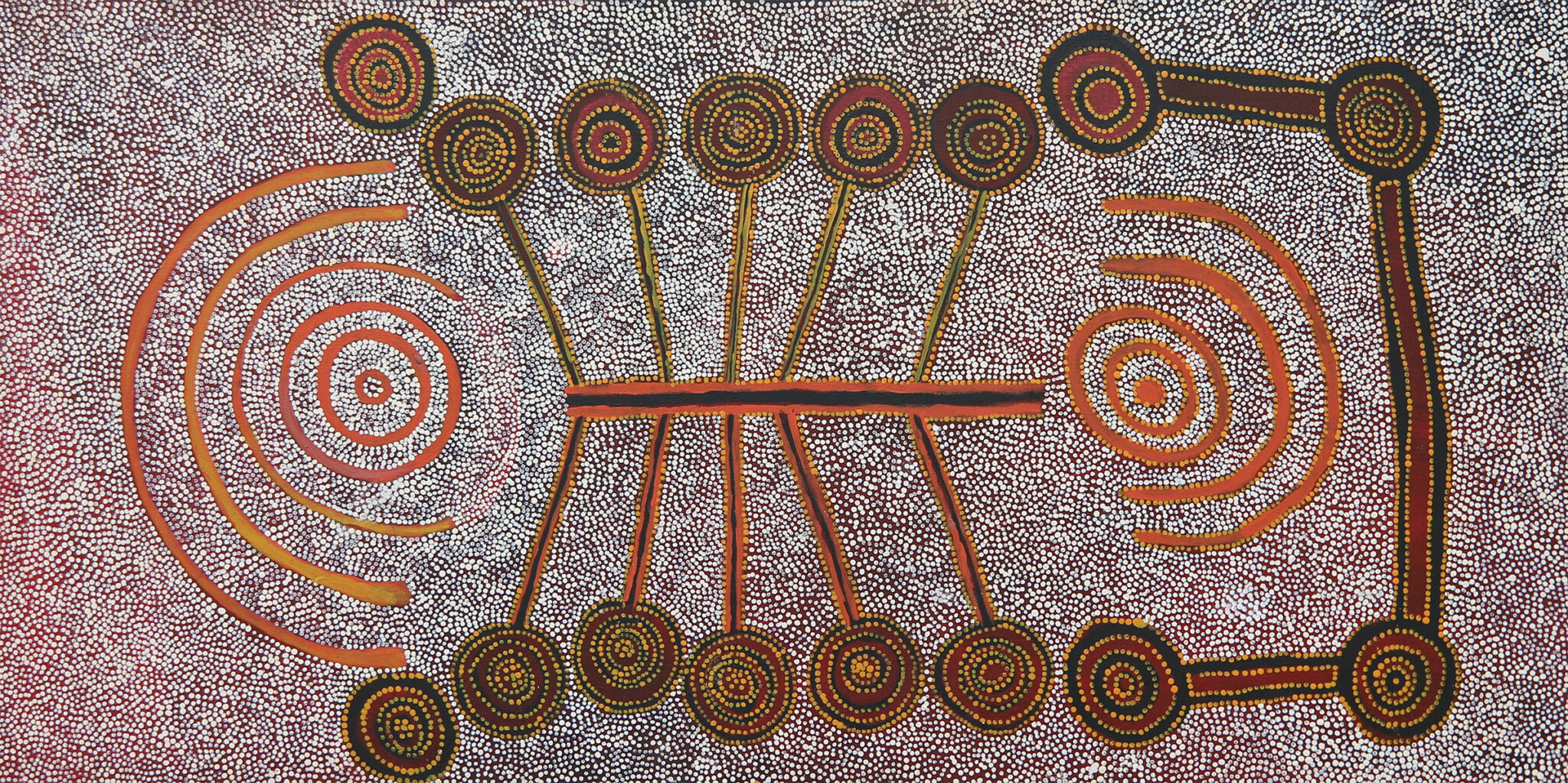Serial:
Size:
$2,300 (tax inc.)
SOLD
The story:
This painting depicts a ‘yurrampi Jukurrpa’ (honey ant Dreaming). This Jukurrpa has special significance for Warlpiri people living in Yuendumu because it passes right through the Yuendumu community. Yuendumu is therefore also called ‘Yurrampi’ (honey ant) for this reason. The ‘kirda’ (owners) of this Jukurrpa are Japangardi/Japanangka men and Napangardi/Napanangka women.
This ‘yurrampi Jukurrpa’ begins southeast of Yuendumu at Yulumu and travels west. The honey ant ancestors made passages and chambers underground as they traveled, which created the soakages that remain today. After Yulumu, the ‘yurrampi’ went west to Yulyupunyu, a small hill called Yamparlinyi, and a place called Yakurrukaji, where they made a soakage. This soakage at Yakurrukaji supplied water to the original settlement of Yuendumu, and is where Yuendumu’s houses stand today.
After leaving Yakurrukaji, the ‘yurrampi’ went on to a place called ‘Wanakurduparnta’ west of Yuendumu, where they sat and attracted other ‘yurrampi’ ancestors to them. Some of the ‘yurrampi’ eventually went back east underground and died at Yulyupunyu, while others went back and died at Yulumu. The ‘yurrampi Jukurrpa’ at Yuendumu is also associated with a ‘wakapartari Jukurrpa’ (mulga worm Dreaming) and ‘jipilyaku Jukurrpa’ (duck Dreaming), all of which overlap at Yakurrukaji.
‘Yurrampi’ (also called ‘yunkaranyi’) are a prized delicacy, considered well worth the enormous effort it takes to dig them out of the ground. Honey ant nests can be located by looking for honey ants that are walking around on the ground and following them back to the entrance of their nest. These foraging honey ants are called ‘jaka-liirli’ and can be identified by a little yellow stripe on their bottoms. When digging up the nest, people look for streaks of bright red soil (‘kanjirtirirtiri’) that signify that they are getting close to the underground honey ant chambers (called ‘minki’). Honey ants ants dig tunnels quite deep underground in ‘jirrijirrirnpa’ (mulga woodland country). Branching from these passageways are chambers in which the edible honey ants are suspended from the ceilings, full of nectar collected from ‘yanyirlingi’ (desert fuchsia [Eremophila latrobei]). With their swollen abdomens, the ants are unable to move. People pick them out, gather them in ‘parraja’ (coolamons), and eat their abdomens, which taste like honey.
In contemporary Warlpiri paintings, traditional iconography can be used to represent the Jukurrpa, particular sites, and other elements. In paintings of this Jukurrpa, concentric circles can represent the soakages created by the ‘yurrampi’ ancestors. These circles can be connected by lines representing the ‘yurrampi’ ancestors’ tracks. Straight lines can represent the ‘karlangu’ (digging sticks) used to dig up the honey ant nests.
Related artwork:
Related products
-
29 Hunter St, Hobart 7000,
Tasmania, Australia - +61 3 6236 9200
- euan@artmob.com.au
Cash – locally only – up to $10,000 only. Layby facilities available. Card details can be advised securely using WhatsApp.
© Art Mob Pty Ltd, Aboriginal Fine Art Dealer, all rights reserved.



